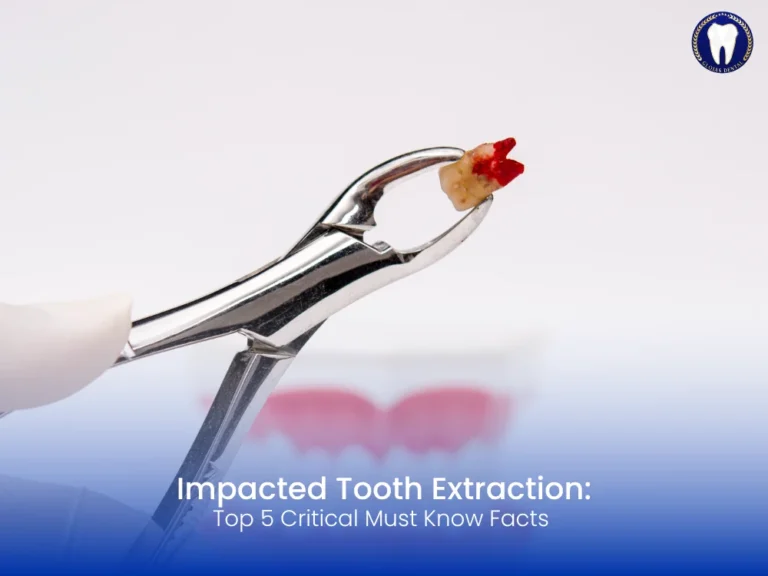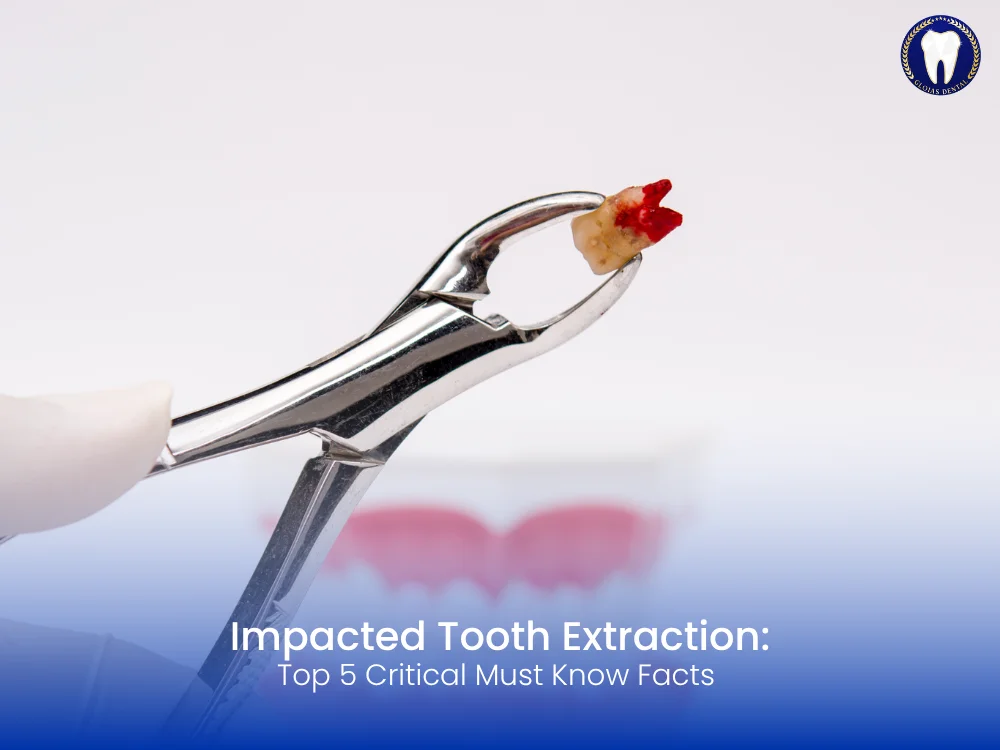Dealing with dental pain or noticing a tooth that just won’t erupt properly? You might be facing a case of impacted tooth extraction. This common dental procedure often stirs anxiety, but understanding the process can alleviate most fears. Whether it’s a wisdom tooth, canine, or any other molar, knowing the causes, symptoms, and treatment options for impacted teeth can help you make informed decisions about your oral health.
An impacted tooth extraction becomes necessary when a tooth fails to emerge fully through the gum line. This condition can lead to complications like infection, cysts, damage to adjacent teeth, or misalignment—making professional dental intervention a must.
What Is an Impacted Tooth?
Understanding Tooth Impaction
An impacted tooth is one that fails to erupt through the gums properly. It may be completely trapped in the jawbone or only partially visible. This typically happens due to crowding, abnormal positioning, or lack of space.
Commonly Affected Teeth
- Third molars (wisdom teeth) – The most frequently impacted.
- Canines – Important for bite function, these can get trapped during eruption.
- Premolars – Occasionally impacted due to orthodontic crowding.
Why Is Impacted Tooth Extraction Necessary?
Prevention of Infections and Cysts
When a tooth remains trapped, bacteria can collect around the gum, leading to painful infections or even cyst formation. These can damage jawbone and nearby teeth.
Avoiding Alignment Issues
An impacted tooth can exert pressure on neighboring teeth, pushing them out of alignment. This can disrupt orthodontic treatment or alter bite patterns.
Pain Management
Impacted teeth are often associated with persistent pain or discomfort, especially when attempting to erupt. Extraction relieves this pressure and promotes healing.
Signs and Symptoms of an Impacted Tooth
- Swollen, red, or bleeding gums
- Difficulty opening your mouth
- Jaw pain and swelling
- Headaches or earaches
- Foul breath or bad taste in the mouth
- Partially visible tooth that hasn’t fully emerged
If you experience any of these symptoms, it’s advisable to consult a dental professional to evaluate whether an impacted tooth extraction is necessary.
How Is Impacted Tooth Extraction Performed?
Initial Examination and Imaging
Before any procedure, your dentist or oral surgeon will assess your condition using X-rays or 3D imaging to locate the tooth’s position and plan the best approach.
Types of Anesthesia Used
- Local anesthesia – Numbs the immediate area.
- Sedation anesthesia – Used for nervous patients or complex cases.
- General anesthesia – Reserved for multiple extractions or deeply impacted teeth.
Surgical Procedure Explained
- Incision in the gum to access the impacted tooth.
- Removal of bone if necessary to reach the tooth.
- Tooth sectioning might be done to ease removal.
- Extraction and cleaning of the site.
- Stitches to promote healing.
Post-Operative Care and Recovery
First 24 Hours: What to Expect
- Mild bleeding and swelling are normal.
- Bite on gauze to control bleeding.
- Apply an ice pack to reduce swelling.
Aftercare Tips
- Avoid smoking, alcohol, and using straws.
- Stick to soft foods like yogurt, mashed potatoes, and smoothies.
- Keep the extraction site clean using saline rinses.
- Take prescribed medications, including antibiotics or painkillers.
Healing Timeline
Most patients recover from impacted tooth extraction within a week. However, deeper impactions may require up to 2 weeks for full healing.
Risks and Complications of Impacted Tooth Extraction
While generally safe, the procedure carries some potential complications:
- Dry socket – Occurs if the blood clot at the site gets dislodged.
- Infection – Rare but possible if aftercare isn’t followed properly.
- Nerve injury – Temporary numbness if nerves are close to the tooth.
To minimize risks, follow all post-op instructions and attend follow-up appointments.
Who Should Perform an Impacted Tooth Extraction?
It’s vital to choose a qualified professional, typically:
- Oral and Maxillofacial Surgeons
- Experienced General Dentists
Ensure your provider has experience with impacted tooth extraction and uses updated equipment and sterilization protocols.
Impacted Tooth Extraction: The Cost Factor
The cost can vary depending on complexity, location, and insurance. On average:
- Simple extraction: $150–$300
- Surgical extraction (with anesthesia): $400–$800+
Always consult with your dentist for an estimate based on your specific case.
Impacted Tooth Extraction and Orthodontics
Sometimes, tooth impaction is discovered during orthodontic evaluations. Orthodontists may coordinate with oral surgeons to ensure timely extractions before starting braces or Invisalign treatments, preserving the alignment and structure of your teeth.
Impacted Tooth Extraction: A Necessary Relief
No one wants dental surgery, but sometimes it’s the best path forward. Whether you’re dealing with recurring infections, misalignment, or persistent pain, impacted tooth extraction offers long-term relief. With proper care and professional support, recovery is usually smooth, and patients can return to normal activities within days.
Frequently Asked Questions FAQs
1. Is impacted tooth extraction painful?
With modern anesthesia and post-op medications, most patients report only mild discomfort rather than significant pain.
2. How long is recovery after an impacted tooth extraction?
Recovery usually takes 5–7 days for simple cases. Complex extractions may take up to 2 weeks.
3. What happens if an impacted tooth is not removed?
It can lead to infection, cysts, damage to adjacent teeth, and bite misalignment.
4. Can you eat after an impacted tooth extraction?
Yes, but only soft foods for the first few days. Avoid hot, spicy, and crunchy items.
5. How do I prevent dry socket after extraction?
Avoid smoking, using straws, and vigorous rinsing in the first 24 hours.
6. Is general anesthesia always required for impacted tooth extraction?
No, many cases are managed with local or sedation anesthesia, depending on complexity and patient comfort.

